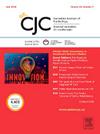Five-Year Multiple Comparison of Transcatheter Aortic Valves: Insights From the OBSERVANT II study
IF 5.8
2区 医学
Q1 CARDIAC & CARDIOVASCULAR SYSTEMS
引用次数: 0
Abstract
Background
Head-to-head comparisons of second and third generations of transcatheter heart valves (THVs) are mostly limited to 2-arm studies and to mid-term follow-up. The aim of this study was to simultaneously compare clinical outcomes of transcatheter aortic valve replacement (TAVR) with 4 different THVs at 5 years.
Methods
Patients undergoing transfemoral TAVR with 4 second-generation THV platforms and enrolled in the multicentre prospective OBSERVANT II study from December 2016 to September 2018 were compared according to the THV received. Outcomes were adjudicated through a linkage with administrative databases and adjusted by means of inverse propensity of treatment weighting (IPTW) based on propensity score. The primary end points were death from any cause and major adverse cardiac and cerebrovascular events (MACCE) at 5 years. Cumulative rates were reported consecutively for Evolut R/Pro, Sapien 3, Acurate Neo, and Portico groups.
Results
A total of 2493 patients were considered. The median age was 83 years and median EuroSCORE 2 was 4.9%. After IPTW adjustment, the rates of all-cause death (53.6%, 46.7%, 50.5%, and 46.3%; P = 0.06) and MACCE (57.2%, 51.2%, 54.4%, and 50.6%; P = 0.08) did not differ among the groups at 5 years. The rate of rehospitalisation for heart failure (HF) (33.9%, 27.0%, 31.6%, 33.7%; P = 0.02) was significantly lower for Sapien 3 at 5 years.
Conclusions
Data from real-world practice showed sustained and similar effectiveness of TAVR considering all the available THVs up to 5 years, but Sapien 3 showed a lower rate of rehospitalisation for HF.

经导管主动脉瓣的5年多重比较:来自OBSERVANT II研究的见解。
背景:到目前为止,第二代和第三代thv的正面比较大多局限于两组研究和中期随访。该研究的目的是同时比较经导管主动脉瓣置换术(TAVR)与四种不同的经导管心脏瓣膜置换术(thv)在5年内的临床结果。方法:2016年12月至2018年9月,纳入多中心前瞻性OBSERVANT II研究的4个第二代THV平台的经股TAVR患者,根据所接受的THV进行比较。结果通过与行政数据库的联系来判定,并使用基于倾向评分的治疗加权逆倾向(IPTW)进行调整。主要终点是5年时任何原因导致的死亡和主要心脑血管不良事件(MACCE)。Evolut R/ PRO、SAPIEN 3、accurate neo和Portico组连续报告累积率。结果:共纳入2493例患者。中位年龄为83岁,中位EuroSCORE 2为4.9%。调整IPTW后,5年各组间全因死亡率(53.6% vs. 46.7% vs. 50.5% vs. 46.3%, p=0.06)和MACCE (57.2% vs. 51.2% vs. 54.4% vs. 50.6%, p=0.08)无差异。SAPIEN 3 THV组5年心力衰竭(HF)再住院率(33.9% vs. 27.0% vs. 31.6% vs. 33.7%, p=0.02)显著降低。结论:来自现实世界实践的数据显示,考虑到所有可用的thv, TAVR的持续和可比较的有效性长达5年,但SAPIEN 3显示HF的再住院率较低。
本文章由计算机程序翻译,如有差异,请以英文原文为准。
求助全文
约1分钟内获得全文
求助全文
来源期刊

Canadian Journal of Cardiology
医学-心血管系统
CiteScore
9.20
自引率
8.10%
发文量
546
审稿时长
32 days
期刊介绍:
The Canadian Journal of Cardiology (CJC) is the official journal of the Canadian Cardiovascular Society (CCS). The CJC is a vehicle for the international dissemination of new knowledge in cardiology and cardiovascular science, particularly serving as the major venue for Canadian cardiovascular medicine.
 求助内容:
求助内容: 应助结果提醒方式:
应助结果提醒方式:


